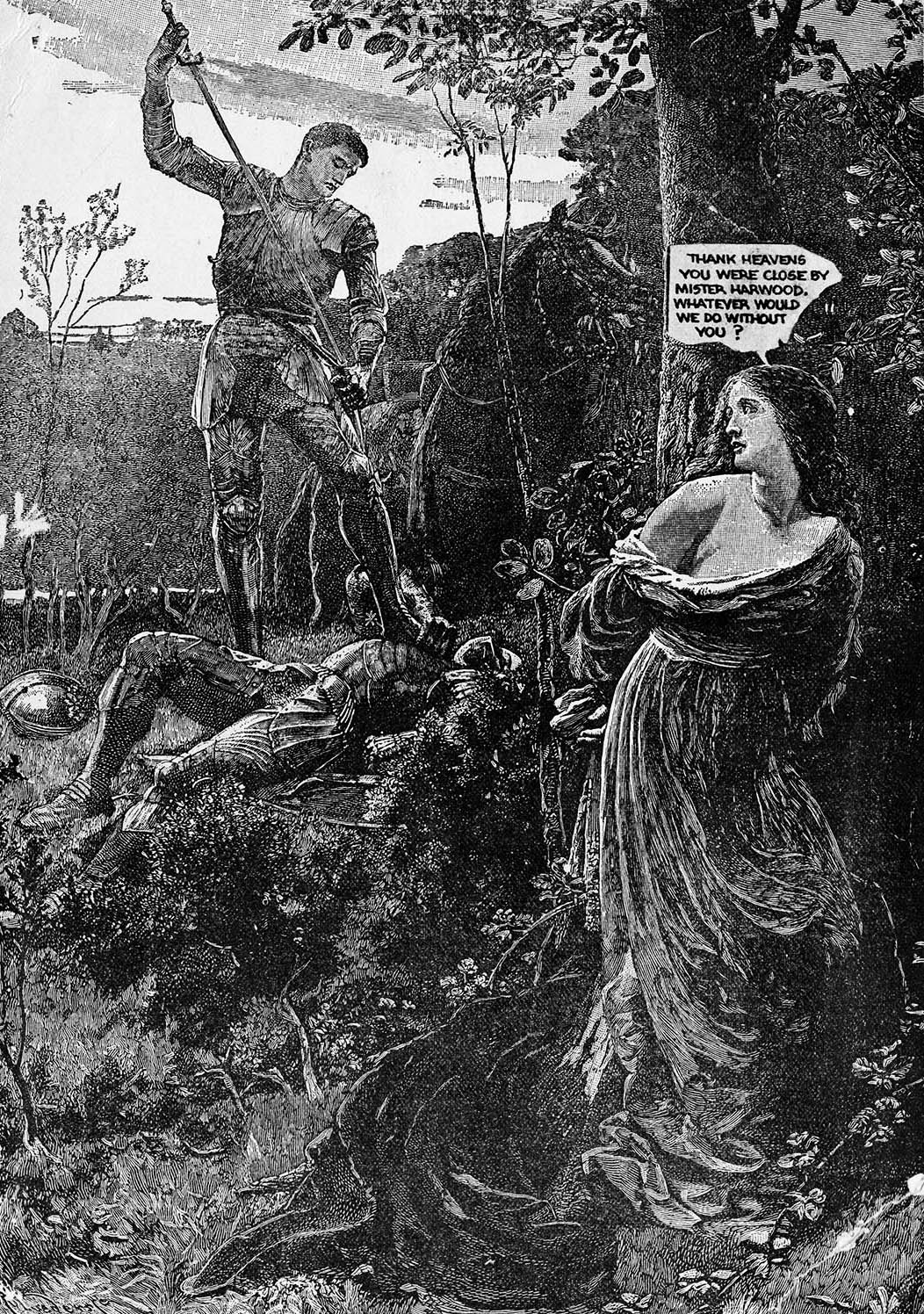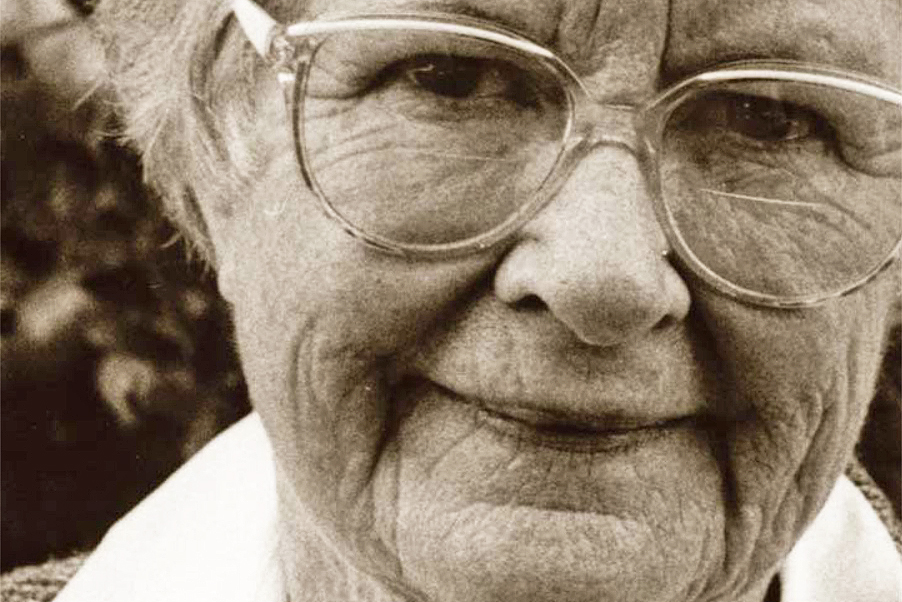Idle Talk: Letters 1960–1964
By Gwen Harwood | Edited by Alison Hoddinott | Brandl & Schlesinger | $29.95
Gwen Harwood, remembered as one of the great Australian poets of the generation that included A.D. Hope, Judith Wright, James McAuley and Francis Webb, was also a prolific letter writer. Gregory Kratzmann, who edited a massive collection of her correspondence fifteen years ago, described her output as being of Tolstoyan proportions, and reckoned that she often wrote two or three long letters in a day. His 500-page selection (A Steady Storm of Correspondence) overlapped only slightly with an earlier collection written exclusively to Tony Riddell, called Blessed City and edited by Alison Hoddinott, which covered only her experience of the war years in Brisbane. Now Hoddinott has published the letters Harwood wrote to her over the four years 1960–64. Only four of these letters appear in Kratzmann’s collection.
It appears to be a modest little book, honouring a friendship, but Idle Talk reads like an epistolary novel, the kind of book Jane Austen might have written if she had found herself a housewife and mother in the Hobart suburbs in the 1960s. Even that comparison may be unfair to Harwood because her interests and language are both earthier and more wide-ranging than Austen’s – it is her perceptive wit and her capacity for social observation that invites the comparison. Idle Talk is full of eccentric characters and ridiculous social occasions. It also has moments of pathos, and gives an immediate sense of the restrictions on women in the Australian suburbs of the 1950s and 1960s.
In the sixties, Hobart was a far-flung outpost of the Australian academic world. (“This ugly charm flung in seas of slate,” according to Harwood.) But it wasn’t entirely sleepy: the university was at the centre of a national controversy over its dismissal of professor Sydney Sparkes Orr when the cold war agitator, James McAuley, was appointed as a reader and then a professor of English literature. This was the department in which Gwen’s husband, Bill, taught Old English and Linguistics; Vivian Smith, another poet, taught in the Modern Languages department.
As editor of Quadrant, McAuley already had form with Harwood: he had rejected “magnificent works of Gwen Harwood” (in her words) but accepted a “feeble” effort under the pseudonym “Francis Geyer” for publication. Gwen greets his appointment with horror:
I’m sure McAuley’s presence here will cancel out second-best friends, and feel depressed about it. And feel depressed too that second-rate polemics & politics should be awarded a Readership – look on this Reader, and on this… I am urging the old man to get the hell out of here. Charles [Hardie, professor of education] has suggested that McA is really a Commo infiltrating & insinuating under the guise of Catholicism but it seems all too horribly like what it appears to be. The universal distribution of poisoned rosaries seems called for, I mean distribution among the faithful.
A few letters later the Harwoods are feeding the McAuleys fish, rather than poison, for lunch:
I said “Trumpeter, Jim,” and he said “Wonderful” and went for it like a dog; he had cleaned up his plate before Bill had finished squeezing his lemon, and then sat hungrily eyeing ours while we finished; there wasn’t any more. He had two goes of pineapple pud & plenty of fruit, not to mention beer & coffee.
Within months, McAuley (sometimes with his five children) has become a regular visitor, dropping in to eat whatever Gwen can rustle up and playing the piano with enviable skill: “streets ahead of me.” In no time at all, he has become a friend: “Heavenly Jim is a goody, really, we like him very much.”
The first excitement of 1961, though, is the Bulletin’s publication of two sonnets by one of Gwen’s other alter egos, “Walter Lehmann,” with the acrostic first letters spelling out “So long Bulletin” and “Fuck all editors.” Harwood writes about the visit of Vincent Buckley to Hobart and how they agreed to submit parodic poems to literary editors under each other’s names; the acrostic of “Eloisa to Abelard” originally read “Vincent Buckley” rather than the reference to the Bulletin. Buckley decided not to submit Harwood’s poems as his own, but she submitted Buckley’s parody “The Sentry” to Leonie Kramer for Australian Poetry 1961 over her own name. Kramer was alerted to the ruse, though she did publish another poem by Harwood, as well as poems by Geyer and Lehmann. Harwood later published “The Sentry” in her first collection of poetry, with no indication that it was Buckley’s.
The recognition of the acrostic message in the Bulletin poems (possibly after a hint from Buckley to his students) caused turmoil in the social world of Hobart, with headlines such as TAS. HOUSEWIFE IN HOAX OF THE YEAR! Harwood became briefly notorious, causing distress to some of her friends and leading her to doubt Buckley’s friendship: “Just to let you know that the shit-hawk Vincent Buckley sold me out to the Bulletin. He was offered the job of poetry editor, feared his part would lose him his £5 weekly (nice to know his price).” It is not long, though, before A.D. Hope has convinced her to forgive him: “I like Vin so much that I don’t really care what he did or didn’t do.” She tends to enjoy the company of all these poets, while reserving judgement on their poetry, taking as her standard whether she’d be willing to sign their poems as her own.
She was incorrigible when it came to inventing poetic personae. At the beginning of 1962, Alison Hoddinott began to act as postbox for “Miriam Stone,” the author of Harwood’s famous “Suburban Sonnet” and “Burning Sappho” about the frustrated aspirations of an artist housewife and mother. Harwood’s mischief-making appears to be a subversive way to fight back against these frustrations. Angus & Robertson agree to publish her first collection of poetry, then dillydally about it until it finally emerges in 1964 (dated 1963). It is clear that the men poets are treated differently, and they condescend to her just a little. “I HATE HOBART” becomes a refrain of the letters as, like some Chekhov character, Harwood laments the cold climate, the parochialism and her distance from the centres of culture. Her interest in food, clothes and any good music that comes her way is heightened by her sense of deprivation.
She turns the visit of Leonie Kramer to give Commonwealth Literary Fund lectures at the university into a comic tour de force:
She is beautiful, with ice-blue eyes that shine like jewels, to coin a phrase; tall, with lovely figure & a 30gn. [guineas] suit to enclose it, topped by a velvet silk-lined evening coat. My dear! It would be 50 gns. at Bidencope’s. I sneaked up to the McAuley bedroom to do over my lipstick & finding myself alone opened a few cupboards – Norma has OCEANS of lovely clothes; you’d be amazed, Al, you with your one good dress & me with mine; there must be more money in Quadrant than we think. I also had time to finger the Kramer french velvet & sigh at its quality.
This letter goes on to describe the quality of the food and the difficulty eating it, providing a brief account of the conversations on “littery matters,” building to a hectic account of the further social events surrounding the lectures (“style good, content atrociously boring”) and ending with a visit from McAuley and the poet Evan Jones, during which McAuley hopped into one of the children’s beds for a sleep.
Through all this there are childhood diseases, women’s operations, picnics with the family, visits from parents and grandparents, and lots of cooking (ox tongue features regularly). School holidays lead to bouts of depression as the poet is kept from her work. The book ends on a high point, though, as Harwood’s collection of poetry is finally published to admiring reviews and she declares that she has given up poetry for commerce. She enrols in a shorthand and typing course and finds work as the receptionist for a Hobart ophthalmologist: “You wouldn’t know me: cool, crisp, HAPPY. I love the job & can hardly wait to crack out in the morning.”
Obviously, this book will appeal to anyone interested in Australian poetry. If you own Harwood’s Collected Poems you can read the relevant poems as you go. But it really deserves a wider audience for its exuberant wit and sense of the ridiculous. Many of the letters were written on “Sappho Cards” (like the one below) that Harwood made by pasting bits of Victorian illustrations on card and adding her own “conversation bubbles,” and Hoddinott reproduces them here. Her efforts pre-date the Monty Python animations or Glen Baxter’s comic rejigging of Boy’s Own illustrations.

Harwood was a genius in her own particular way and, reading these letters, one feels for the limitations on her life. She had never been to Europe, though her poetry is rich with references to European art. She is hungry for good music, though reliant on recordings (especially Dietrich Fischer-Dieskau) most of the time; she has lived without a piano for fifteen years and laments the loss of her own skill. Her encounters with the prominent men poets reveal how confident she is in her own abilities and her own judgement, though she refuses to become a critic. She seems to have no worldly ambition beyond the quality of her poetry – though she would like money for a car, a good piano or nice clothes. Above all, she manages to be an intellectual, reading avidly from the library and keeping up with international developments in philosophy and poetry.
Harwood could never have written all this as a novel because she was too aware of her responsibilities to her family and the friends whom she loves while mocking their follies. Intimations of the ambivalent nature of marriage and family life appear beneath the comedy, and Hoddinott gives her own perspective on the Harwood marriage when she describes Bill Harwood’s determination to create a computer that might write poetry: “He kept the machine by his bedside and Gwen sardonically referred to it as his mistress.”
Just as she knew how original and brilliant her own poetry was, Harwood clearly had a sense of the lasting value of her letters. She chided Hoddinott for having acted on the command to burn most of those written during 1960. They are delightful in their own right, far beyond their insights into the politics of poetry and the academic world of the 1960s, or even their depiction of family life in the Australian suburbs. Harwood offers an exemplar of how to survive as an artist in the provinces by calling on her friends to share her sense of the ludicrous. •




